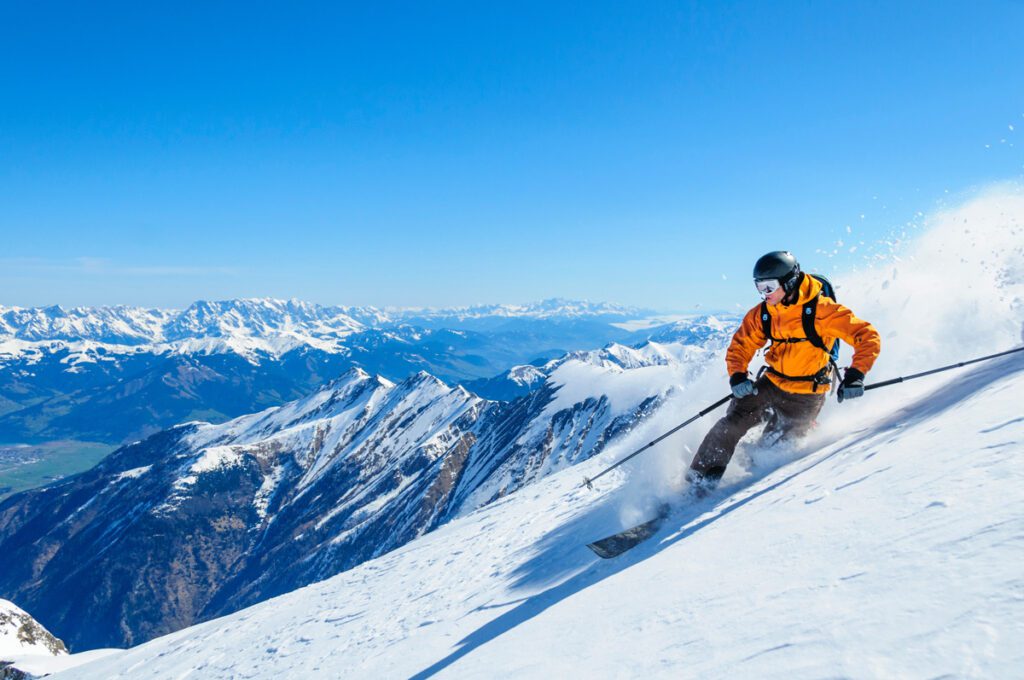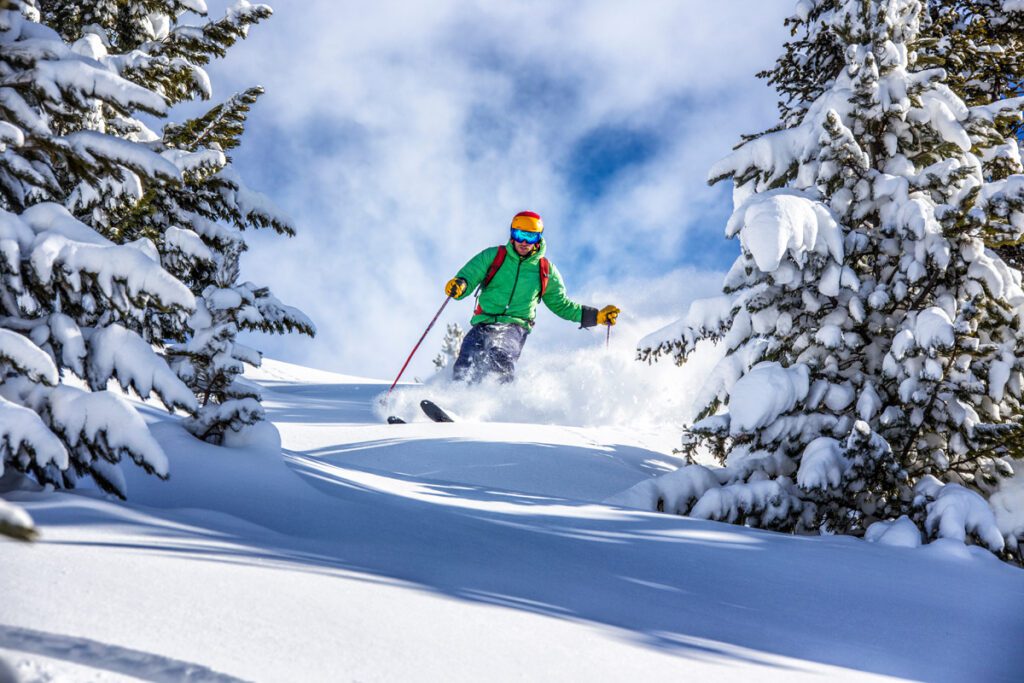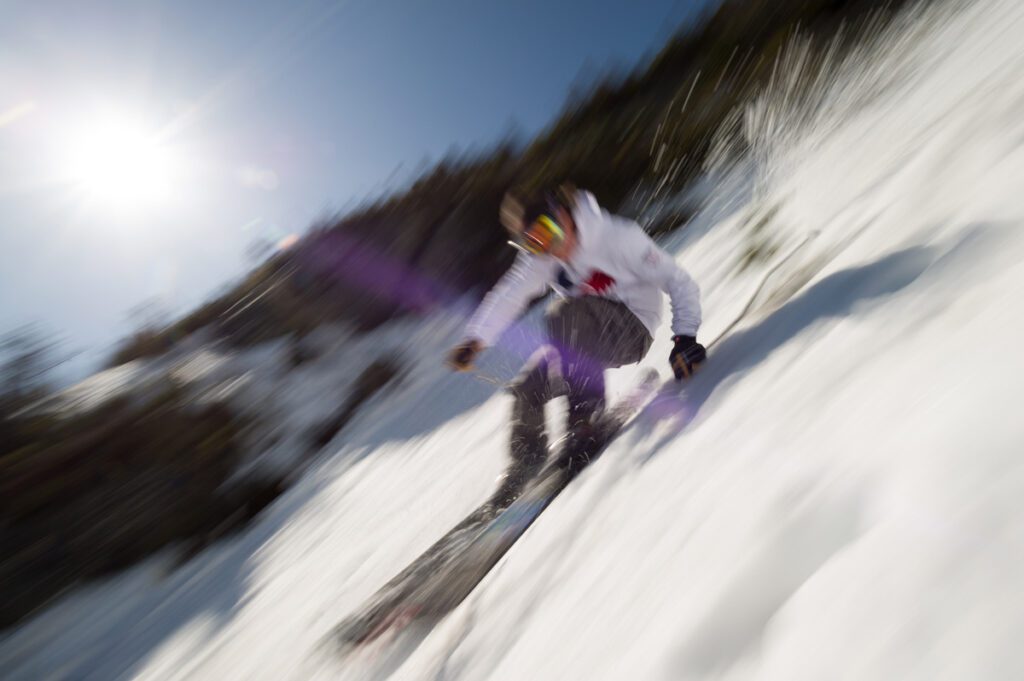Tips For Skiing Like A Pro
Skiing is an exhilarating sport that offers endless opportunities for growth and improvement. Whether you’re a seasoned enthusiast or someone who has recently graduated from the beginner slopes, there’s always room to enhance your skills and take your skiing to the next level. This guide highlights a few advanced skiing tips, unlocking the secrets that can propel you from a proficient skier to a master of the slopes.
Below, the guide is divided into distinct sections, each addressing key aspects of advanced skiing. From mastering carving techniques to conquering challenging terrains, enhancing speed and agility, to exploring the thrilling world of jumping and freestyle, we’ve got you covered. Additionally, we address crucial equipment considerations and shed light on safety measures for advanced skiers.

Carving
Carving is an art in skiing that transforms the mountain into a canvas for your turns. Mastering this technique is fundamental to unlocking precision and control.
Proper Body Positioning for Carving
Carving begins with the correct body posture. Achieving the optimal position helps you engage the edges of your skis effectively, allowing for smoother turns and enhanced control. Here are a few skiing tips:
- Alignment: Ensure your body is aligned with your skis. Proper alignment minimizes resistance and also maximizes the power of your turns.
- Forward Lean: Maintain a slight forward lean from your ankles, keeping your weight centered over the middle of your skis.
- Hip and Shoulder Alignment: Align your hips and shoulders with the direction of the turn. This promotes stability and also aids in efficient weight transfer.
Edge Control and Weight Distribution
Carving relies heavily on precise edge control and effective weight distribution. Pay attention to the following tips to hone your skiing skills.
- Edge Engagement: Gradually engage the edges of your skis as you initiate a turn. Smooth and gradual edge engagement enhances control and stability.
- Weight Shift: Distribute your weight evenly between both skis during the initiation of the turn. As the turn progresses, shift your weight to the outside ski to maintain balance and control.
- Finishing Strong: Complete each turn by allowing your skis to naturally follow the arc of the carve. Focus on a strong finishing position to maximize the effectiveness of the turn.
Advanced Carving Drills
Practice makes perfect, and carving drills are invaluable for refining your technique. Incorporate these tips into your skiing training:
- Railroad Tracks Drill: Create parallel tracks in the snow by consistently engaging the edges of your skis. This drill enhances edge control and precision.
- Short Turns Drill: Practice quick turns to improve agility and responsiveness. Vary the terrain to challenge yourself and adapt to different conditions.
- Carving on Varied Slopes: Experiment with carving on slopes of varying steepness. This helps you adapt your technique to different conditions and terrain.

Advanced Terrain
From navigating steep slopes to conquering moguls and exploring off-piste powder, here are some skiing tips to confidently tackle demanding landscapes.
Handling Steep Slopes
Steep slopes demand a unique set of skills to maintain control and composure. These techniques can empower you to conquer steep terrain with confidence.
- Body Positioning: Adjust your body position to a slightly lower stance, keeping your weight centered and forward. This lowers your center of gravity and enhances stability.
- Short Turns: Employ quick turns to manage the descent on steep slopes. This technique provides better control and also allows you to adapt to the changing pitch.
- Edge Control: Focus on precise edge control to navigate the descent smoothly. Gradual edge engagement is key to preventing skidding and maintaining control.
Skiing Moguls with Confidence
Moguls present a challenge that, when mastered, can add a layer of excitement to your skiing experience. Explore the following tips for skiing moguls with finesse.
- Line Selection: Choose a line that allows you to navigate the troughs and crests of the moguls smoothly. Look ahead and plan your route.
- Absorption and Extension: Use your legs to absorb the impact as you descend into a mogul, and extend them as you rise over the crest. This rhythmic movement maintains balance.
- Pole Planting: Establish a consistent pole planting rhythm to guide your turns. Proper pole placement enhances stability and aids in maintaining a fluid motion.
Off-Piste and Powder Conditions
Navigating challenging terrain is a testament to your skiing prowess. As you incorporate these tips into your skiing skill set, you’ll find joy and satisfaction in conquering slopes that once seemed daunting.
- Floatation and Flexion: Keep your weight slightly back to stay atop the powder. Flex your knees to absorb the snow’s irregularities, allowing for a smoother descent.
- Wider Stance: Adopt a broader stance to provide stability in deep powder. This helps prevent your skis from getting caught in the snow.
- Read the Terrain: Pay attention to the contours of the terrain. Anticipate changes in snow conditions and adjust your technique accordingly.
Conditioning
Speed and agility are the hallmarks of a skilled skier. Here are exercises, techniques, and tips that will boost your overall skiing fitness and enhance your ability to navigate the slopes with speed and agility.
Improving Overall Skiing Fitness
A strong foundation in fitness is essential for advanced skiing. Incorporate the following exercises into your training to build strength, endurance, and flexibility:
- Leg Strength Training: Squats, lunges, and leg presses strengthen the muscles crucial for stability so you can make powerful turns.
- Cardiovascular Conditioning: Engage in activities like running, cycling, or interval training to improve cardiovascular endurance.
- Core Workouts: Strengthen your core muscles to enhance balance and control. Planks, twists, and stability exercises are beneficial.
Maintaining Control at Higher Speeds
Skiing at higher speeds requires a combination of skill and control. Explore these tips to ensure you maintain composure and control when skiing down the slopes:
- Aerodynamic Positioning: Streamline your body by tucking into an aerodynamic position. Bend your knees slightly, keep your torso forward, and lower your stance.
- Edge Awareness: Be aware of your edges at higher speeds. Gradual and controlled edge engagement is crucial to prevent skidding and maintain stability.
- Visual Focus: Look ahead and anticipate the terrain. A focused gaze helps you make split-second decisions and react swiftly to changes in the slope.
Quick Turns and Maneuverability
Integrating these exercises and tips into your training regimen will give you newfound confidence and control when skiing at higher speeds.
- Slalom Drills: Set up a slalom course with cones and practice weaving through them. This drill sharpens your ability to make rapid, controlled turns.
- Quick Edge-to-Edge Transitions: Practice rapid edge-to-edge transitions by carving short turns. This enhances your agility and responsiveness on the slopes.
- Terrain Adaptation: Ski on varied terrain, incorporating natural features like bumps and rolls. Adapting to the terrain challenges your agility and also hones your ability to adjust your technique on the fly.

Jumping and Freestyle
Mastering jumping and freestyle skiing adds an exciting dimension. As you start this thrilling journey, remember to prioritize safety and enjoy the creative expression that freestyle skiing brings to the slopes.
Basics of Jumping
Jumping on skis introduces a dynamic element to your skiing repertoire. Understanding the fundamentals of jumping technique is crucial for a safe and enjoyable experience. Here are a few tips to take you skiing vertical:
- Takeoff: Approach the jump with a balanced stance, and as you reach the lip, flex your knees to absorb the takeoff. Additionally, use your legs to generate upward momentum.
- Mid-Air Positioning: Keep your body compact and centered during flight. Avoid excessive leaning forward or backward. Arms should be slightly forward for balance.
- Landing: Prepare for landing by extending your legs as you descend. Aim to land on both skis simultaneously, with knees flexed to absorb the impact.
Executing Grabs and Spins
Adding style to your jumps involves incorporating grabs and spins into your repertoire. Here are tips for executing these sick skiing moves:
- Grabs: Start with simple grabs like the safety grab or tail grab. Reach for your ski or binding while in mid-air, ensuring a balanced and controlled position.
- Spins: Begin with 180-degree spins and progress to more advanced rotations. Initiate spins with a deliberate twist of your hips and shoulders, using your poles for balance.
Safe Freestyle Skiing
While the thrill of freestyle skiing is undeniable, safety should always be a top priority. Follow these essential safety considerations:
- Progression: Gradually progress from smaller to more significant jumps. Develop your skills incrementally so you can build confidence and reduce the risk of injury.
- Terrain Awareness: Familiarize yourself with the terrain features and jump constructions. Choose jumps that are well-built and suited to your skill level.
- Protective Gear: Wear appropriate protective gear, including a helmet, to minimize the chance of head injuries. Additionally, padding for knees and elbows can offer extra protection.
Common Mistakes to Avoid
Even the most seasoned skiers can fall into common pitfalls. Check out these tips for maintaining safety and improving overall skiing performance.
Common Errors
Here are a few basic mistakes that can hinder your ski game:
- Backseat Skiing: Avoid leaning too far back. Maintain a balanced stance to ensure proper weight distribution and control.
- Overconfidence: While confidence is essential, overestimating your abilities can lead to risky situations. Assess terrain and conditions realistically.
- Neglecting Gear Maintenance: Regularly check and maintain your equipment because faulty bindings or poorly tuned skis can compromise safety and performance.
Improving Skills
Here are a few tips for those who want to continually push the envelope on the mountain:
- Continuous Learning: Embrace a mindset of constant learning. Attend advanced skiing clinics, seek feedback, and be open to refining your skills.
- Varied Terrain Exploration: Challenge yourself by exploring different terrains. Exposure to diverse conditions enhances adaptability and skill development.
- Safety Courses: Consider taking safety courses specific to advanced skiing. These courses provide valuable insights into risk management and emergency procedures.